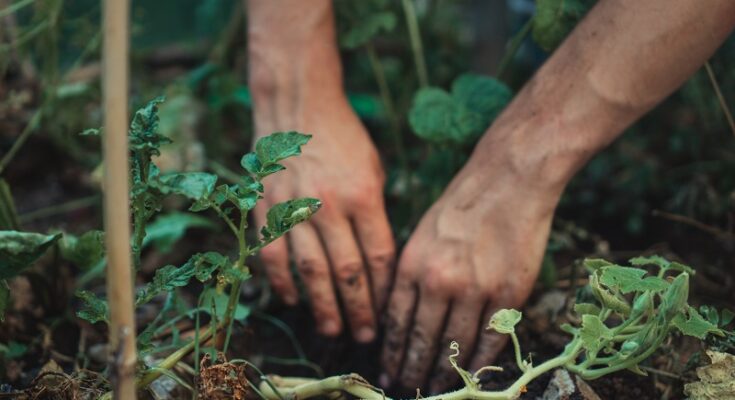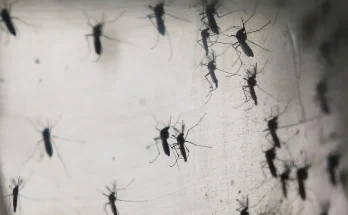Gardening isn’t just about growing plants. It’s your backstage pass to living sustainably through organic recycling, a.k.a. composting, taking centre stage. This practical method transforms kitchen leftovers into powerful soil nutrients.
Most folks toss food remnants, lawn clippings, and old leaves straight into garbage bins, which is a big mistake. These materials can actually recharge your garden bed instead of filling up landfills.
Whether you’re a beginner or a pro, this earth-friendly practice is totally within reach. You will find practical insights into decomposition techniques in this guide. Read along.
Understand Composting Basics
Tiny microbes are the real heroes here. They break down your organic waste and turn it into incredibly nutritious soil. Bacteria and fungi work nonstop to transform scraps into rich dirt that plants need.
For this whole system to work right, air needs to circulate freely. You’ve got to turn your compost pile regularly. If you skip this step, you’ll end up with a stinky, soggy mess nobody wants to deal with.
A good compost pile needs variety. Throw in fruit peels, veggie leftovers, used coffee, and broken eggshells for nitrogen. Mix in dry leaves, old newspaper, and wood bits to add carbon and keep things balanced. This combination keeps everything working smoothly.
Not all things belong in compost, though. Meat scraps, cheese rinds, and anything greasy will attract animals and create awful smells. Plants sprayed with chemicals are also bad. They’ll poison your compost with harmful substances.
Choose the Right Compost Bin
The right choice makes composting so much easier. You’ve got several options.
When shopping for one, consider the space you have available, your budget, and the true demands of your garden. Put it somewhere convenient which allows adding scraps and turning the pile much easier.
Simple open piles cost almost nothing if you’ve got plenty of space. They’re quite easy to work with but probably won’t work well in tiny yards or city apartments.
Tumbler bins have become really popular because they’re practical. Just spin them around instead of digging through the pile with a shovel! They keep animals out and smell contained, though they cost more than basic options.
Enclosed containers work perfectly when space is tight or in urban settings. They usually come with covers that trap heat and moisture, speeding up the whole process considerably.
Collect Compostable Materials
Collect fruit and vegetable peelings, coffee grounds, and fresh grass clippings. These break down quickly and provide nutrients.
Balance them out with brown items like dried leaves, shredded paper, and small branches. They add carbon and help prevent unpleasant odours.
Set up a scrap collection spot in your kitchen, perhaps a container with a lid under the sink or on the counter. Empty it frequently to prevent odours. Including this habit as part of your daily routine can make handling discards easier and reduce what goes into the landfill.
Engage your family in this activity, and this will become a fun shared experience. Ask children to collect fruit skins or rinse out eggshells. You could use a chart to assign tasks.
You should also discuss how this practice helps the environment to motivate everyone. When everyone participates, turning scraps into soil becomes not only helpful, but also a pleasant family activity.
Maintain Your Compost Pile
Getting the mix of green and brown materials right makes all the difference. Each type has a specific job. Veggie scraps, coffee grounds, and lawn clippings contain an overabundant amount of nitrogen. That speeds things up.
However, dead leaves, newspapers, and small branches mainly provide carbon, which controls moisture and prevents bad smells from developing.
Keep the balance in check by using more brown materials than green. Too much fresh material leads to unpleasant smells, a clear sign of an imbalance.
A handful of brown material absorbs excess moisture and restores order. On the other hand, if decomposition slows to a crawl, a bit of green speeds things up again.
Turn the Compost
This method aerates compost, supplying oxygen and reducing smells. It also supports beneficial microbes.
To turn your compost, use a garden tool every week or two to mix the compost. This approach prevents conditions that invite pest invasions and uncontrolled bacterial reproduction.
Manage Moisture Levels
Aim for a consistency similar to that of a damp sponge. Apply gentle pressure to assess the moisture level.
If it feels too dry, adding dampness can expedite microbial activity. On the other hand, excessive wetness can impede the decomposition process.
What Are Some Common Problems
Catching problems early makes fixing them much easier. Bad smells and poor air circulation typically mean something’s wrong with your compost mix.
Making specific adjustments based on what you observe can quickly restore balance. These changes eliminate pests, preserve valuable organic matter, and keep your composting process running smoothly year-round.
How To Apply Finished Compost
You know your compost is ready when it becomes dark, brittle, and odorous, similar to soil in its natural state. This signals that it’s ready for use.
A straightforward approach that guarantees a gradual and consistent release of nutrients is to apply a 5-cm layer to garden beds in the spring or autumn. This enriches the soil over time, enhancing its structure and ability to hold onto rainwater.
A balanced combination also helps container plants. An additional nutritional boost that keeps plants lively and healthy is provided by mixing a dollop of homemade fertiliser into potting soil.
A little consistency goes a long way. Regular application strengthens plant resilience, minimises dependence on synthetic additives, and fosters a flourishing, self-sustaining ecosystem.
How to Compost in Small Spaces
City residents can compost effectively, even with limited space. One way is vermicomposting.It uses worms. They break down food scraps and produce nutrient-rich fertiliser.
The critters efficiently process organic remnants when maintained in warm, well-ventilated environments with appropriate moisture levels.
Bokashi composting also uses anaerobic fermentation techniques, breaking down waste inside sealed containers with specialised bran cultures. This is ideal for small spaces, and it can handle items like meat and dairy.
Make sure to periodically drain the accumulating liquid, known as the bokashi tea. For a sustainable approach, dilute the liquid and use it to nourish plants.
Composting with Your Kids
Engage children in composting by making it a fun project. Set up a small compost area where they can choose the spot and create a unique sign. Let them gather kitchen scraps and discuss what makes good compost.
This hands-on activity helps children feel responsible and understand waste reduction.
You can create interesting projects like a “compost race” using clear containers to observe breakdown processes. A small worm bin can be another exciting activity, teaching children how worms help break down food scraps.
Environmental Impact of Composting
Composting offers a powerful way to contribute to a healthier planet while managing organic waste effectively.
Minimises Landfill Waste and Emissions
Natural recycling is a game changer when it comes to managing waste responsibly. Instead of letting organic materials pile up in landfills, it redirects them toward something useful. Scraps that would otherwise decay and release harmful gases can be repurposed into something beneficial.
By breaking down naturally, this process keeps methane emissions in check while reducing overall trash. The impact goes far beyond one home. A single household system helps restore soil, recycle nutrients, and strengthen ecosystems.
What seems small adds up over time. Food scraps stop being garbage and become part of a larger solution.
Environmental Sustainability
These benefits extend beyond waste reduction. This approach enhances soil health and plant growth, cultivating gardens and ecosystems through structural and nutrient improvements.
Local community initiatives promote eco-friendly practices and diminish reliance on chemical fertilisers.
Consult Professional Gardeners for Complex Composting
Professional gardeners offer comprehensive analyses of soil quality and assess microbial activity, nutrient balance, and potential contamination risks.
Additionally, experienced horticulturists develop tailored strategies aligned with your specific landscape requirements. This helps gardeners navigate complex waste management scenarios.
Pro gardeners can also guide you through processing challenging organic materials, recommend optimal setup configurations, and provide targeted advice for maximising effectiveness.
Conclusion
Recycling kitchen waste boosts soil and reduces household waste. Composting cuts landfill use, emissions, and helps the planet.
Remember that composting remains achievable even in modest spaces—no large garden is required. Begin your composting journey today to enhance soil vitality, promote environmental sustainability, and join the zero-waste movement with all its remarkable benefits.




